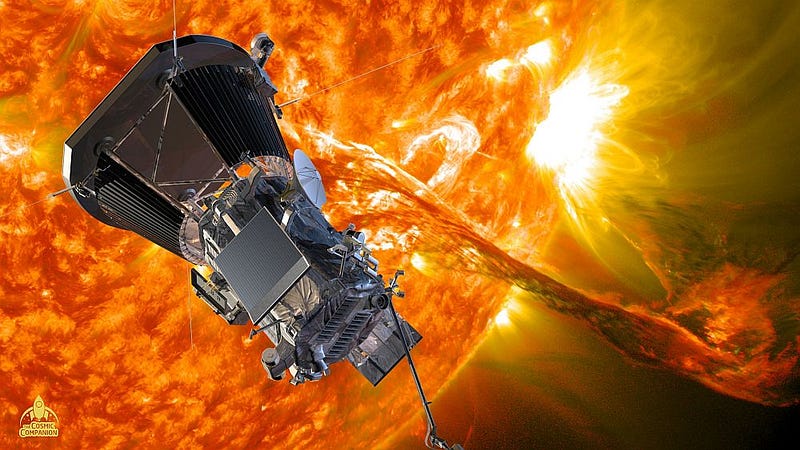# Parker Solar Probe Reaches Sun's Atmosphere for the First Time
Written on
Chapter 1: The Historic Encounter
The Parker Solar Probe has achieved a groundbreaking milestone as the first spacecraft to touch the Sun's atmosphere. This achievement opens new avenues for understanding our star and its influence on the solar system.
"This landmark event allows scientists to directly interact with the Sun's material," stated Thomas Zurbuchen from NASA's Science Mission Directorate. "The knowledge we gain about the Sun will enhance our understanding of stars across the universe."
Section 1.1: Understanding the Solar Atmosphere
The Sun, like Earth, possesses an atmosphere known as the corona, which is typically visible during a total solar eclipse. NASA's Parker Solar Probe has successfully ventured into this delicate layer surrounding the Sun, marking a significant advancement in solar research.

As the probe travels closer to the Sun, it encounters the corona, a superheated layer maintained by gravity and magnetic fields. The outer edge of the corona, previously debated among scientists, was believed to start around 20 solar radii from the Sun. Remarkably, the Parker Solar Probe first detected the corona at just 18.8 solar radii, aligning closely with astronomers' predictions.
Subsection 1.1.1: The Significance of Switchbacks
In the mid-1990s, the Ulysses spacecraft discovered unusual S-shaped structures in the solar wind. Initially thought to be confined to polar regions, the Parker Solar Probe found these "switchbacks" are prevalent throughout the solar wind and originate from the photosphere, the Sun's visible outer layer.
These switchbacks, which are rich in helium, follow the paths of magnetic funnels believed to contribute to fast solar winds. Understanding these phenomena could help explain why the solar atmosphere reaches temperatures in the millions of degrees, while the Sun's surface is comparatively cooler at approximately 5,500 degrees Celsius (9,900 degrees Fahrenheit).
Section 1.2: The Speed of Exploration
During its closest approach, the Parker Solar Probe travels at an astonishing speed of over 190 kilometers per second (430,000 miles per hour)—fast enough to cover the distance from Philadelphia to Washington, D.C. in just one second.
Chapter 2: The Future of Solar Research
The first video, titled "NASA's Parker Solar Probe Touches The Sun For The First Time," offers an overview of the mission's objectives and achievements.
The second video, "Parker Solar Probe Touches the Sun," provides further insights into the implications of this historic encounter and how it enhances our understanding of solar dynamics.
James Maynard, a space enthusiast with degrees in physics, chemistry, and history, founded The Cosmic Companion. He currently resides in Tucson with his wife, Nicole, and their cat, Max.
Did you find this article engaging? Subscribe to The Cosmic Companion for more insightful content delivered directly to your inbox on Medium! Join us for podcasts, weekly video series, newsletters, and news briefings on Amazon Alexa and more!